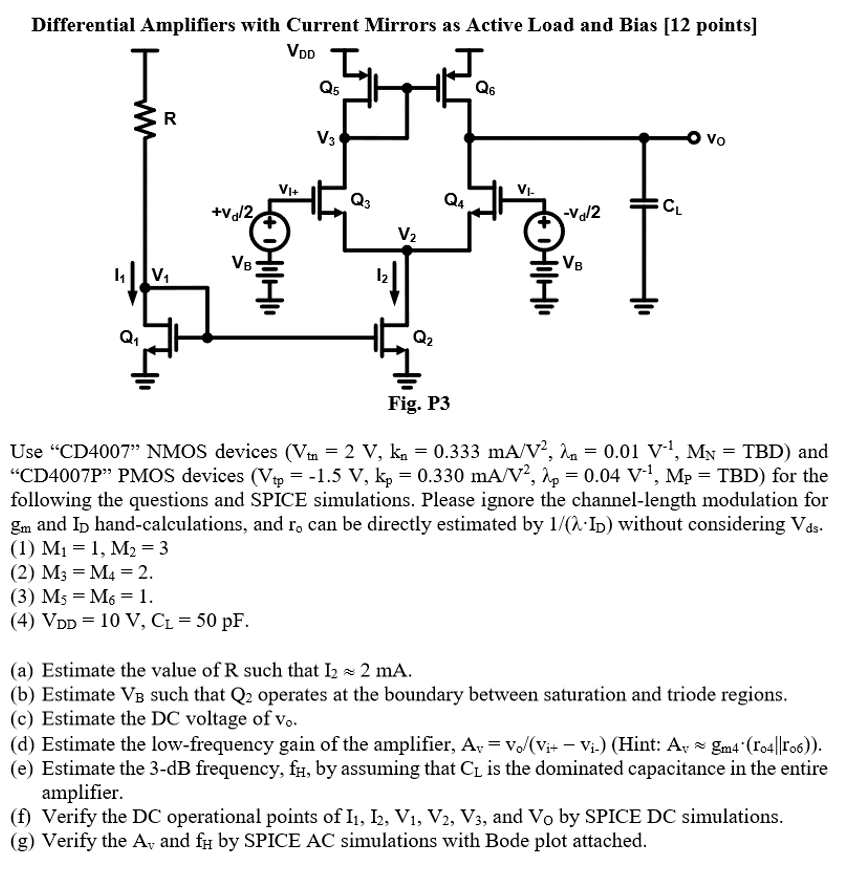Answered step by step
Verified Expert Solution
Question
1 Approved Answer
Differential Amplifiers with Current Mirrors as Active Load and Bias [12 points] VDD ww Q R V -Val2 VI+ V HIIHII Q5 V3 Q3

Differential Amplifiers with Current Mirrors as Active Load and Bias [12 points] VDD ww Q R V -Val2 VI+ V HIIHII Q5 V3 Q3 1 V Q Q4 Q6 VI- -Vg/2 H|H|"" VB - Vo CL Fig. P3 Use "CD4007 NMOS devices (Vtn = 2 V, kn = 0.333 mA/V, 2n = 0.01 V-, M = TBD) and "CD4007P" PMOS devices (Vtp = -1.5 V, kp = 0.330 mA/V, 2p = 0.04 V-, Mp= TBD) for the following the questions and SPICE simulations. Please ignore the channel-length modulation for gm and I hand-calculations, and r, can be directly estimated by 1/(ID) without considering Vds. (1) M = 1, M = 3 (2) M3 = M4 = 2. (3) M5 M6 = 1. (4) VDD = 10 V, C = 50 pF. (a) Estimate the value of R such that I = 2 mA. (b) Estimate V such that Q operates at the boundary between saturation and triode regions. (c) Estimate the DC voltage of Vo. (d) Estimate the low-frequency gain of the amplifier, Av = vo/(Vi+ V.) (Hint: Av ~ gm4 (ro4||106)). (e) Estimate the 3-dB frequency, f, by assuming that C is the dominated capacitance in the entire amplifier. (f) Verify the DC operational points of I, I2, V, V2, V3, and Vo by SPICE DC simulations. (g) Verify the A, and f by SPICE AC simulations with Bode plot attached.
Step by Step Solution
There are 3 Steps involved in it
Step: 1
a Since I2 2 mA and M2 3 the current through Q1 I1 should be 23 0667 ...
Get Instant Access to Expert-Tailored Solutions
See step-by-step solutions with expert insights and AI powered tools for academic success
Step: 2

Step: 3

Ace Your Homework with AI
Get the answers you need in no time with our AI-driven, step-by-step assistance
Get Started


